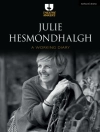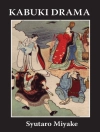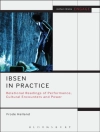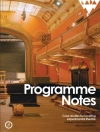New political realities and shared histories connect film cultures across borders
In South Asia massive anticolonial movements in the twentieth century created nation-states and reset national borders, forming the basis for emerging film cultures. Following the upheaval of the partition of India and Pakistan in 1947 and the Bangladesh Liberation War of 1971, new national cinemas promoted and reinforced prevailing hierarches of identity and belonging. At the same time, industrial and independent cinemas contributed to remarkably porous and hybrid film cultures, reflecting the intertwining of South Asian histories and their reciprocal cultural influences. This cross-fertilization within South Asian cultural production continues today.
South Asian Filmscapes excavates these complex politics and poetics of bordered identity and crossings through selected histories of cinema in South Asia. Several essays reveal ways in which fixed notions of national identity have been destabilized by the cross-border mobility of filmed arts and practitioners, while others interrogate how filmic politics intersects with discourses of nationalism, sexuality and gender, religion, and language. Together, they offer a fluid approach to the multiple histories and encounters that conjure “South Asia” as a geographic and political entity in the region and globally through a cinematic imagination.
Spis treści
Introduction. Transregional Archives, Cinematic Encounters: Filmscapes across South Asia
Elora Halim Chowdhury and Esha Niyogi De
Part I: Nations and Regional Margins
1.) National Identity and Cinematic Representation: Independent Films in Bangladesh
Fahmidul Haq
2.) Female Friendship and Forbidden Desire: Two Films from 1960s Pakistan
Kamran Asdar Ali
3.) Bringing Back Sikhs after the 1984 Pogrom: The Politics of Picturization in Hindi Cinema
Amit Ranjan
4.) Silencing Films from the Chittagong Hill Tracts: Indigenous Cinema’s Challenge to the Imagined Cultural Homogeneity of Bangladesh
Glen Hill and Kabita Chakma
5.) Pakistan, History, and Sleep: Hassan Tariq, a Progressive Patriarch, and Neend
Nasreen Rehman
Part II: Transregional Crossings
6.) The Public in the Cities: Detouring through Cinemas of Bombay, Calcutta, and Lahore (1920s–1930s)
Madhuja Mukherjee
7.) Cross-Wing Filmmaking: East Pakistani Urdu Films and Their Traces in the Bangladesh Film Archive
Lotte Hoek
8.) Action Heroines and Regional Gifts: Authorship Crossing Pakistan
Esha Niyogi De
9.) Realism and Region in South Indian Cinemas, 1947–1977
Hariprasad Athanickal
10.) 'This Is London, Not Pakistan!’: Articulations of the Diaspora in Pakistani Punjabi Film
Gwendolyn S. Kirk
11.) The Birth of a Cinema in Post-9/11 Pakistan
Zebunnisa Hamid
Part III: Fractured Geographies, South Connectivities
12.) Zahir Raihan’s Stop Genocide (1971): A Dialectical Cinematic Message to the World
Fahmida Akhter
13.) Gender, War, and Resistance: The Case of Kashmir
Alka Kurian
14.) Cinema That Raises a Critical Consciousness: The Films of Alamgir Kabir
Naadir Junaid
15.) Ethical Encounters: Friendship and Healing in Contemporary Films about the Bangladesh Liberation War
Elora Halim Chowdhury
Contributors
Index
O autorze
Esha Niyogi De is senior full-time lecturer of English at the University of California, Los Angeles. She is author of Empire, Media, and the Autonomous Woman (Oxford University Press, 2011) and co-editor of Trans-Status Subjects: Gender in the Globalization of South and Southeast Asia (Duke University Press, 2002).












